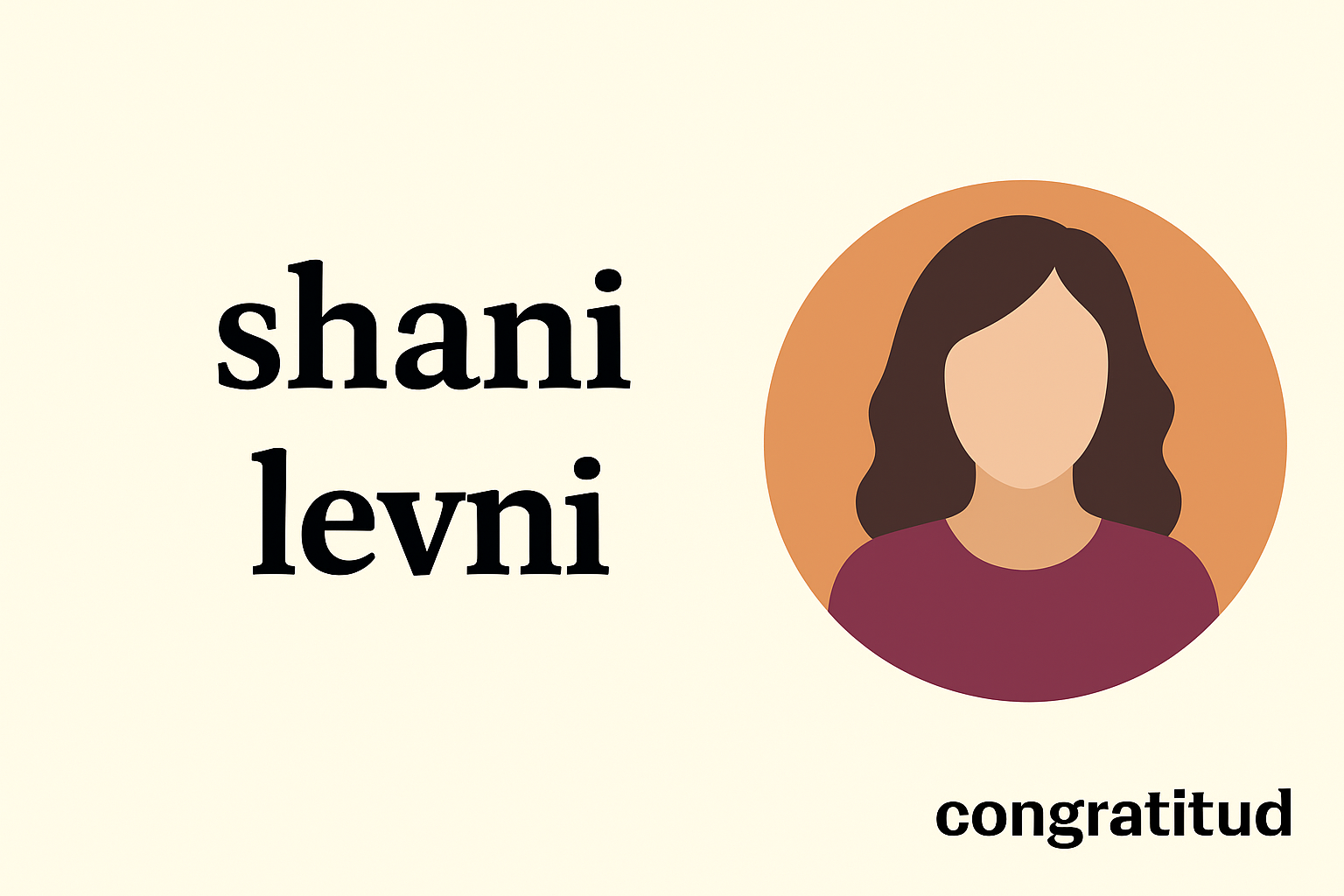If you’ve come across the name shani levni and want a clear, reader-friendly explainer, this guide gathers what people typically look for: background context, the kinds of work associated with the name, how to evaluate credibility, and practical steps for researching projects, interviews, and public presence—all organized for humans first and search engines second.
Understanding the Name and Context
Names carry stories, and the story around shani levni is best approached with curiosity and care. Because names can belong to more than one person, the smartest starting point is to map the context that brought you here: did you see the name on an artwork caption, a product page, a conference program, a startup profile, or a research abstract? Note industry, city, language, and the year you encountered it. With that simple frame, you’ll separate the right person from unrelated name matches and avoid mixing biographies or portfolios that don’t belong together.
Typical Professional Footprints People Look For
When readers search for shani levni, they usually want to understand role, craft, and credibility. Start by scanning three layers: primary work (for example, creative practice, product building, strategy, or research), supporting roles (teaching, speaking, mentoring, community projects), and proof points (press mentions, exhibitions, case studies, conference posters, or awards). Look for a through-line: recurring themes, preferred mediums, or problem spaces that show consistency over time. A useful rule of thumb is to compare early and recent work to see how scope, quality, and subject matter have evolved.
Creative Practice and Portfolio Signals
If your trail to shani levni began in visual culture or storytelling, review portfolios the way editors do. Seek series rather than one-off pieces; study captions for material choices, project dates, collaborators, and venues; and look for write-ups that explain intent and process, not just finished results. Strong portfolios tend to document drafts, iterations, and context—how a piece fits into a wider body of work, what constraints shaped it, and what impact it had. Credible profiles often include installation views, credits for printers or fabricators, and acknowledgments for grants or residencies.
Product, Tech, or Strategy Work
Sometimes the same name appears in product teams, operations, or strategy roles. If that’s the case for shani levni, shift your lens from aesthetics to outcomes. Read case studies for the business problem, the measurable change, and the role played in reaching it. Good practitioner write-ups describe the starting baseline, the constraints, the solution design, and what changed for users or the organization. Documentation that includes before-and-after metrics, customer quotes, and learnings from failed experiments signals maturity and transparency.
Academic, Research, and Thought Leadership
If your interest in shani levni involves scholarship, examine the research trail with a librarian’s mindset. Confirm author names carefully, since similar spellings can lead to confusion. Prioritize peer-reviewed work, conference proceedings, and citations. Scan abstracts for the research question and methods; check whether datasets or protocols are available; and look for follow-up work that builds on earlier findings. Public talks, panels, and workshops can reveal how research translates into practice and how the author engages with other fields.
How to Verify Authority Without Guesswork
Trust is built on verifiable signals. To assess shani levni with confidence, cross-check details across multiple independent sources: matching headshots, consistent timelines, repeated affiliations, and identical project descriptions. Notice whether credits list full names of collaborators and institutions, which makes background checks easier. When information is thin, focus on tangible artifacts—published work, documented projects, and dated announcements—rather than unverified summaries. Consistency across years often speaks louder than a single high-gloss feature.
Mapping Public Presence and Contact Paths
A practical way to round out your picture of shani levni is to map the public footprint: project pages, talks or exhibition notes, and any professional profiles that include roles, locations, and dates. Quality profiles typically feature short biographical statements, a curated selection of work, and a clear contact method. If reaching out, be specific about your purpose—press, collaboration, licensing, or research—and reference the exact piece or initiative that prompted your message. Polite, targeted outreach tends to get better replies than open-ended questions.
Projects, Collaborations, and Impact
People often search a name to learn whether collaborations exist with studios, labs, or organizations. For shani levni, treat collaborations as evidence of scope: Who handled which part of the work? What was delivered and when? Impact can look like audience response, adoption in a product, measured outcomes in a program, or citations in subsequent research. When evaluating impact, separate attention from achievement; an article that trends for a day isn’t the same as a project that changes how a team works or how a community engages with an issue.
Practical Research Workflow You Can Copy
Here’s a simple, repeatable approach you can use for shani levni or any name you’re investigating. First, collect anchors: full name spelling, city or region, languages used, and the earliest dated work you can find. Second, build a timeline with year markers and key milestones. Third, cluster work by theme—creative series, product launches, publications, or talks—and write one-sentence summaries for each cluster. Finally, identify gaps where you need primary sources. This structured pass turns scattered notes into a coherent profile you can trust.
Why This Page Is Search-Friendly
Helpful pages answer intent, demonstrate expertise, and avoid fluff. This guide organizes what readers typically want to know about shani levni into clear sections with descriptive headings and long, useful paragraphs. It favors verifiable signals over speculation, explains how to validate information, and gives a repeatable workflow so readers can continue on their own. It also avoids gimmicks that frustrate readers—thin content, keyword stuffing, or promises that lead nowhere—while keeping language straightforward and accessible to a general audience.
Ethical Use of Names and Work
Whenever you write about shani levni, treat the name with the same care you’d want for your own. Attribute properly, respect image rights, and avoid lifting text from portfolios or profiles. If you summarize a project, keep the creator’s intent intact and link back when appropriate in your own publishing environment. When facts are uncertain, say so; when sources disagree, present both sides and explain why. Responsible coverage builds trust and ensures your research helps, rather than harms, the people behind the work.
Conclusion
Whether you arrived here through a gallery caption, a product case study, or a conference program, the best way to learn about shani levni is to build a clear context, follow the documented trail of work, and verify details with patience and care. Use the timeline method, prioritize primary sources, and look for recurring themes that reveal depth over time. With that approach, you’ll move beyond quick takes and develop a well-rounded understanding that respects both the audience’s time and the subject’s craft.
FAQs
Q1: What’s the best first step when researching this name?
Start by noting where you saw it—industry, city, and date—then look for primary sources like project pages, talks, or publications that match those details.
Q2: How can I tell if I’ve found the right person when names overlap?
Cross-check headshots, roles, dates, and locations across multiple profiles; consistency across those points is a strong indicator you’ve matched correctly.
Q3: What counts as a credible proof of work?
Published case studies, exhibition records, conference listings, and dated announcements are stronger than unverified summaries or reposted snippets.
Q4: How do I evaluate impact versus buzz?
Look for measurable outcomes, adoption, citations, or long-term audience engagement rather than short-lived spikes in attention.
Q5: What’s a respectful way to reach out for more information?
Be specific about your intent, reference the exact project that prompted your message, and offer clear context for your questions or proposed collaboration.


